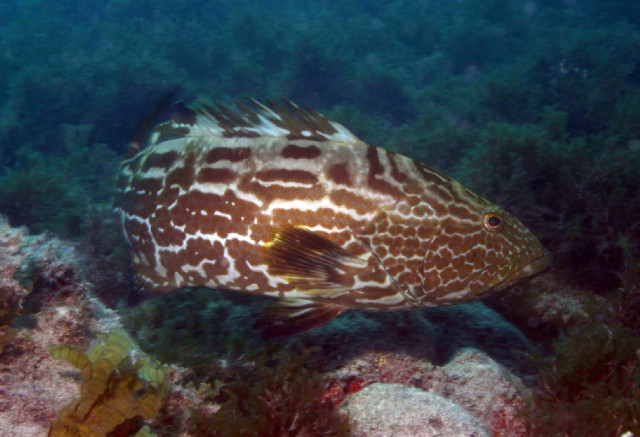Scientists announced today the discovery of reef structures they believe doubles the size of the Southern Atlantic Ocean's largest and richest reef system, the Abrolhos Bank, off the southern coast of Brazil's Bahia state. The newly discovered area is also far more abundant in marine life than the previously known Abrolhos reef system, one of the world's most unique and important reefs.
Researchers from Conservation International (CI), Federal University of Espírito Santo and Federal University of Bahia announced their discovery in a paper presented today at the International Coral Reef Symposium in Fort Lauderdale. "We had some clues from local fishermen that other reefs existed, but not at the scale of what we discovered," says Rodrigo de Moura, Conservation International Brazil marine specialist and co-author of the paper. "It is very exciting and highly unusual to discover a reef structure this large and harboring such an abundance of fish," he adds.

The Abrolhos Bank is considered one of the world's most important reefs because it harbors a high number of marine species found only in Brazil including species of soft corals, mollusks and fish found only in the Abrolhos shelf. The Mussismilia coral genus, a relic group remnant of an ancient coral fauna dating back to the Tertiary period that went extinct long ago elsewhere in the Atlantic, is the dominant coral of the Abrolhos reef, which is structured in unique mushroom-like shapes.
Researchers mapped the new reef structures in areas ranging from nine to 124 miles (15 to 200 km) off the coast and in depths ranging from 60 to 220 feet (20 to 73 meters) using a side scan sonar which produces a three-dimensional map of the marine seabed.
"Due to their relative inaccessibility and depth, the newly discovered reefs are teeming with life, in some places harboring 30 times the density of marine life than the known, shallower reefs," says Guilherme Dutra, Conservation International's director of marine programs in Brazil. "That's the good news. The bad news is that only a small percentage of marine habitats in the Abrolhos are protected, despite mounting localized and global threats."
Localized threats include over-fishing, coastal development and large scale land conversion to agriculture, shrimp farms, pollution, oil drilling and sedimentation. Global threats include climate change and ocean acidification.
Researchers acknowledged the conservation effectiveness of the present network of Marine Protected Areas in the Abrolhos. But it is very limited and not nearly enough vis-à-vis the mounting threats, they added.
The next phase of the Abrolhos project will be to study the marine life in the new reef structures.
"These studies reveal the complexity and connectivity of the reefs in the Abrolhos region and will support conservation planning," states Guilherme Dutra.
The studies are part of the Marine Management Area Science Program coordinated by CI with the participation of research institutions around the world, and supported by the Gordon and Betty Moore Foundation and individual donors.






Comments